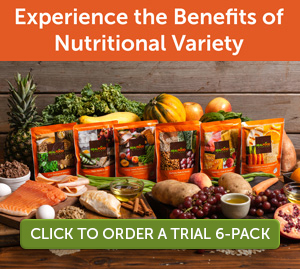By Hilarie Geurink, RD, CSP
If you’ve been thinking about trying a blenderized diet, you’re probably wondering how much work it will really take. Like, do I have to make every single meal for the foreseeable future? How will I keep up? And honestly, where do I even start?
On top of that, your medical team may have told you that formula is fine and even safer, which can leave you wondering if you’re making things harder than they need to be. And while those words might be meant to reassure you, they can make you feel stuck and unheard, especially if the current feeding plan isn’t working well for you or your loved one.
Tube feeding often feels so rigid, like there’s only one way to do it. But what if tube feeding could be more flexible, closer to how most people eat, and still meet your needs?
In this post, we’ll explore how real food can be part of your tube feeding routine in a flexible and manageable way, without the pressure to be perfect, so you can finally try it.
Making Room for Flexibility in Tube Feeding
The reality is that most people who eat by mouth do not eat the same thing every day, and they do not prepare every meal from scratch.
People eat to fuel up for a big event, because something smells good, to connect with others, or just because it’s lunchtime. Meals are often a mix of home-cooked food, takeout, convenience options, frozen meals, and snacks. Many of these choices are spontaneous and do not require strict calorie or nutrient tracking, and nobody expects that.
People using feeding tubes are no different. Some days you want to share a special meal with family during the holidays or enjoy a favorite dish made together. Other days filled with therapies and medical appointments, and you need something quick on the go.
Yet despite this, you may feel like you have to be rigid, tracking every nutrient and making every meal perfectly balanced, or you’re doing it wrong. That kind of pressure isn’t how most people eat food, and it can make tube feeding feel overwhelming and much harder than it needs to be.
It’s no surprise you feel boxed in, stuck, and unsure how to move forward. The truth is, we have made this more complicated than it has to be.
When your real life isn’t part of the plan, it’s easy to get stuck in a feeding routine that feels rigid or unsustainable. And in the process, you miss out on the benefits of real food, the same ones we encourage for everyone else.
Clinical Benefits of Real Food for Tube Feeders
I would be missing something important if I didn’t share some of the benefits of a blenderized diet and explain WHY those benefits happen. Here’s what the research tells us, and what many families notice in real life.
Studies show that people who switch from standard formula to a real food often experience fewer symptoms like nausea, vomiting, abdominal pain, diarrhea, and reflux1. These uncomfortable symptoms can make feeding stressful and exhausting for both the person eating and their caregivers.
One reason real food might help is its texture. Blenderized real food tends to be thicker than most formulas, and this thickness may reduce reflux and vomiting2. A blenderized diet also tends to provide an improved nutrient profile comprised of various whole food ingredients, mimicking the normal way food moves through the digestive system2.
From my experience working with families, variety often plays a key role in how well someone tolerates their tube feeds.
Getting the same formula every day or relying on just one homemade blend, often because trying more feels overwhelming or too time-consuming, can make it harder for the body to feel good and digest well.
But the benefits are about more than just physical symptoms. Blending real food gives families the chance to prepare meals together and share the experience, helping to normalize feeding time and bring connection back to the table4.
Real-life success stories reflect these experiences, showing how real food can bring meaningful changes beyond just nutrition.
Why Variety Matters in Blenderized Food and Formula
All these benefits sound promising, but I understand that you might still have questions about the practical side of things. Is blending every meal really necessary? And how do you manage it all without feeling overwhelmed?
For some, blending every meal works great. But for many, it’s about finding a balance that fits their life, and that’s where commercial blenderized formulas can be a helpful part of the plan.
They make it simpler to get started with real food, offer backup on hectic days, and help you find a feeding plan that works for you, without the stress of preparing every meal from scratch.
Here are a few real-life ways families I work with include commercial real food products in their tube feeding routines:
- Some families batch blend what they can weekly and use commercial blends to fill in the gaps
- Others use homemade blends at home but switch to commercial options when traveling or on the go. Real Food Blends® is a commercial option offering 100% real food meals with no synthetic ingredients.
- Some mainly use commercial blends but make homemade meals a few times a week for special occasions or when they have time
- Some do all homemade blends but keep commercial products for emergencies or very busy days
What’s most important to know is that you don’t have to choose one or the other.
You can create a plan that works for your family, and many families find that this flexibility helps their child tolerate feeds better and makes life feel less overwhelming.
How to Get Started with Real Food for Tube Feeding
If you’re curious about trying real food, the best approach is to start slow and simple. Try offering just one blended meal a day while keeping the rest of the feeding plan the same. This helps you or your loved one’s digestion adjust gently and keeps things manageable for the person making the meals.
Start with foods that are easy to digest, especially if your child hasn’t had much food or fiber before, or it’s been a while since you or your loved one has had real food.
Using balanced recipes with known calorie amounts can help you swap meals without worrying about missing calories or nutrients. Always check with your healthcare team when making changes to your tube feeding plan. Multivitamin and mineral supplementation may be indicated, per healthcare professional recommendation.
And remember, it’s perfectly okay if it takes time to find what works. If you keep finding yourself stuck, it’s likely your first step is too big. Starting small and keeping things realistic is the best way to find a plan that works for you.
A Balanced Approach to Real Food and Tube Feeding
Making changes like this can feel overwhelming, and it’s natural to want the best for your health or your loved one’s health. Real food often feels like a hopeful step towards that. But that hope shouldn’t come with pressure or stress.
You deserve support that meets you where you are, honoring your unique needs, your capacity, and your day-to-day life. When we let go of the idea that there’s only one “right” approach, it gives you a real chance to try. And when you do, it’s not just digestion that improves. Tube feeding often becomes more manageable, more personal, and a lot less stressful.
Hilarie Geurink is a consultant for Nutricia North America and has been compensated to write this blog post.
References:
- Hron B, Fishman E, Lurie M, et al. Health Outcomes and Quality of Life Indices of Children Receiving Blenderized Feeds via Enteral Tube. J Pediatr. 2019 Aug;211:139-145.
- Walker S, Johnson T, Carter H, et al. Blenderized food tube feeding in very young pediatric patients with special healthcare needs. Nutr Clin Pract. 2023;1-8.
- Batsis ID, Davis L, Prichett L, et al. Efficacy and Tolerance of Blended Diets in Children Receiving Gastrostomy Feeds. Nutr Clin Pract. 2020 Apr;35(2):282-288.
- Bennett K, Hjelmgren B, Piazza J. Blenderized Tube Feeding: Health Outcomes and Review of Homemade and Commercially Prepared Products. Nutr Clin Pract. 2020 June;35(3):417-431.
Comments are closed.






